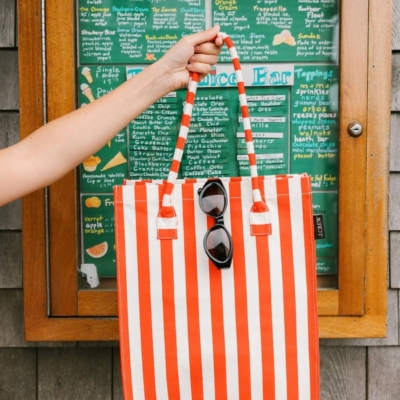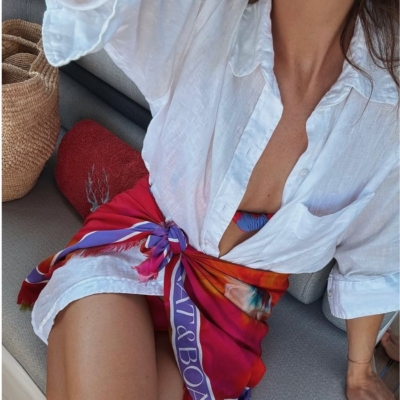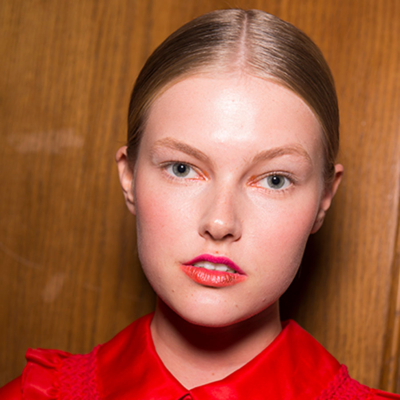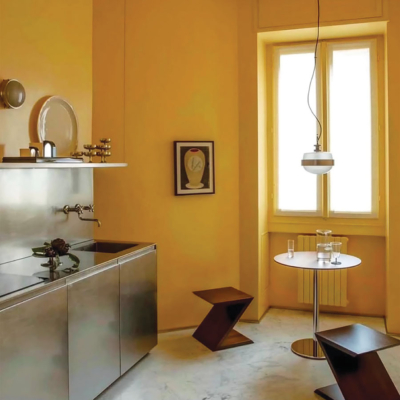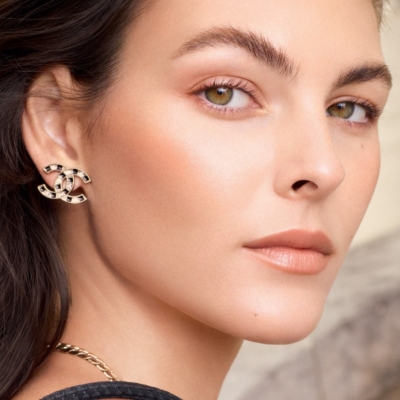Dublin poet Maeve O’Sullivan is one of Ireland’s leading experts in the haiku style. An art form native to Japan, it is typically comprised of 17 syllables in three lines of five, seven and five, with variances depending on the language it’s written in. O’Sullivan’s arresting verse has been widely published and anthologised over the last 25 years, with over ten language translations such as Russian and Quechua. Her four collections with Alba Publishing (UK) include Initial Response (2011), Vocal Chords (2014) and A Train Hurtles West (2015). She has won the Listowel Writers’ Week Poetry Prize and two Museum of Haiku Literature Awards.

Her most recent collection, Elsewhere (2017), contains haiku, haibun (a mix of haiku and prose) and long-form poetry. It is the product of an epic solo trip around the world, with locations ranging from Dublin to Lough Derg, the Camino to Peru, flinging us down to Hong Kong, Japan and the Indian sub-continent. Ever the sharp observer, O’Sullivan skilfully plucks what she sees and captures the moment’s intense beauty with aplomb. Her collection is a delicious merge of the familiar and foreign, as she pays homage to her roots, before bringing us on many exotic pilgrimages. Fellow poet Breda Wall Ryan has said, “O’Sullivan’s Elsewhere will resonate with all who love journeying. A master of traditional form, she is also an accomplished haijin whose haiku, senryu and haibun invite the reader to savour intense moments of contemplation.”
O’Sullivan is a founding member of the Hibernian Poetry Workshop and Haiku Ireland, and has performed with the Poetry Divas spoken word collective at various literary events and festivals, including Electric Picnic and the Dublin Writers’ Festival. Maeve leads haiku poetry workshops with adults and children, and has reviewed poetry and haiku collections for various journals including North, Orbis, Dublin Review of Books and Blithe Spirit, the journal of the British Haiku Society.
Maeve O’Sullivan lives in Dublin. She is currently working on numerous projects. She will give a public reading in Galway City Library on Culture Night (September 20 2019, 6-8pm).
Elsewhere (€12) is published by Alba Publishing and available from selected bookshops nationwide.

On home
I’ve been living in an apartment in Inchicore for the last 13-14 years. It’s the first home I’ve ever owned, and may also be my last! I’ve grown to love this neighbourhood, made famous by Michael Hartnett’s Inchicore Haiku. I live alone which is not a bad arrangement for a writer, especially one with a demanding day job in education, and a busy social and cultural life. My home is my sanctuary: it feels good to close the door after a busy day or week and to relax by reading, writing or watching my favourite TV programmes (I deliberately don’t have Netflix). My local park is the Islandbridge Memorial Gardens which are wonderful at any time, but especially in the summer when the twin rose gardens are in full bloom. My local gallery is IMMA, just 15 minutes’ walk away. I socialise partly in the city and partly in my locality, depending on who I’m meeting and what we’re doing. My favourite local pub is The Patriot’s Inn and my favourite cafés are The Lime Tree and The Mess which is housed in the beautifully restored Richmond Barracks Museum. Two new cafés have opened up in Inchicore this year so that’s good news in my book, since I’m really more of a café person than a pub person.
On roots
I grew up in Glenageary in what used to be known as the Borough of Dún Laoghaire. We were quite close to the sea, so I remember the salty air and water of Sandycove, where I learned to swim, also walks down Dún Laoghaire pier and up Killiney Hill. At home, the smell of Mum’s brown bread and apple cake featured regularly, plus the sounds of various musical instruments being played: piano, violin, flute, trumpet, clarinet and guitar, at different times. And the chat, of course: we’re a family of talkers as well as musicians! There was a rose-edged green in the centre of the estate; we had a small front garden and a long back garden with a swing and a hutch that once housed a family of rabbits, plus a clothes line that was almost always occupied with garments belonging to the eight residents. A young family is enjoying all of that now, since the house was reincarnated as a second home four years ago, having had the O’Sullivans for 60 years.
On early reading
Our parents and older sisters read to us when we were growing up in the 1960s and 1970s, also our teachers at playschool and at school. Children’s literature was not as varied or sophisticated as it is now, but we got by. Dr Seuss books were popular in our house, as were those of Enid Blyton and Beatrix Potter. My favourites were Seuss’s Green Eggs and Ham (“I do not like them, Sam-I-am”), The Magic Faraway Tree by Blyton and a book that our American aunt posted to us from Boston, called Sylvester, the Mouse with the Musical Ear by Adelaide Holl. Sylvester gets displaced from his home in a meadow because of development – an eco-theme that still resonates today – but (spoiler alert!) he finds a suitable new companion and home by the end of the story. All three books are beautifully illustrated, another reason why they were so enjoyable and so memorable.
On creating
I write in the living room of my apartment, on the same table that I (and my guests) eat meals on. I face the balcony door which has a south-westerly aspect. I’m on the fourth floor, over the rail line to Galway, Cork and Kerry, so I can hear the rumble of trains passing. I have a view of what we like to call the Dublin Mountains, and can also see across to the south-east of the city where I work. Above the door is a watercolour by Don Conroy of an eagle flying over some proper mountains, the first painting I ever bought. To the left of this is my father’s old guitar, hanging on a wall-mount (my own guitar is right beside the chair I write in). I have other artworks, including a pen-and-ink picture of Sandycove from the family home, and a narrow mirror with a gold frame, made and gifted to me by a former housemate, artist Jessica Grehan. She incorporated pieces of my then-favourite cup which had fallen onto our tiled kitchen floor. What else? Two small Buddha statues, two sets of floor-to-ceiling bookshelves, family photos, and a red sofa-bed. This matches the stripes on the various images of the Poolbeg chimneys, which my Dad helped to design as an ESB engineer fifty years ago.
On bookshops
My favourite Dublin bookshop is Books Upstairs. It’s great to see them going from strength to strength in their new home, with the larger space, the newly-restored and redecorated café and all the wonderful (and free) Sunday afternoon readings that take place there. Outside Dublin, my favourite bookshop is Charlie Byrne’s in Galway. Both have friendly and helpful staff, and are also very supportive in stocking the work of writers who are published by independent presses, like me and many others. One of the best bookshops I visited while travelling was Café y Libros in Cartagena in Colombia, I spent lots of time there in just one week, even though they only had a small number of English-language titles.
On her “To Be Read” pile
I tend to have a few different books on the go at one time, including fiction, non-fiction, poetry, haiku and its related forms (haikai). I also subscribe to some journals, so they pop into my mailbox at an alarming rate. There are so many online journals now too, which take up quite a lot of screen reading time. On the fiction side of things, I’m about to read the novel Milkman by Anna Burns and Sweet Home, the debut collection of short stories by Wendy Erskine. There’s been quite a buzz about both books and I’ve heard Erskine reading a couple of hers live, which whetted my appetite. As for poetry, I want to buy and read Seamus Heaney’s version of Virgil’s Aeneid VI. I was blown away by Stephen Rea’s performance of it at the Mountains to Sea Festival in Dún Laoghaire in the spring. I studied the Aeneid IX in Latin class at school and loved it. Also on my pile is a collection of haibun (a form which combines prose and haiku) called Tokaido by Canadian poet Terry Ann Carter. It’s inspired by a series of woodcut prints by the 19th-century Japanese artist Hiroshige, who himself was inspired by travelling along the 53 stations of the same name in eastern Japan. I read another of Carter’s books of haibun this summer and they’re superb.
On escapes
I love to travel, both at home and abroad. I have family roots and connections in Co Kerry and it’s my favourite county outside Dublin. The whole “Kingdom” is very picturesque but I only started visiting South Kerry around 15 years ago – having been introduced to Iveragh by a North Kerryman – and really fell in love with that region and its landscape. I was fortunate to get a week’s residency at the Cill Rialaig Arts Centre this summer and loved every minute of it. I applied for one of their artist’s cottages for the week following the Amergín Poetry Festival weekend in Waterville, so that all worked out nicely. I’m already planning to return to that area next summer. Spain is a country I’ve been visiting regularly for 40 years now – I can’t get enough of it! I also have family in Paris and a close friend near Trieste, so have got to know those places pretty well through a series of visits spanning many years. Porto in Portugal is another favourite spot. I usually manage to visit London around once a year, but my next overseas trip will be to Glasgow. I’ll be there for (the next scheduled) Brexit day, in fact!
On Japan
I’ve visited Japan just once so far, as part of my extended travels in 2016-17. I only had ten days there as I spent less time in the more expensive countries. I only had a chance to visit three cities: Tokyo, Kyoto and Nara. I especially loved Kyoto: its canals, its temples, its sushi bars and its colour. While there, I met up with members of the Hailstone Haiku Group: their leader Stephen Gill arranged for us all to meet at Kompukuji Temple, which has associations with haiku masters Basho and Buson. Buson’s grave is there, so visiting that was very special, as he’s my favourite of the Japanese masters. The photo I took of the thatched hut at the temple where Basho is reputed to have stayed ended up as the cover image of my last collection, Elsewhere, which was travel-themed. It felt quite surreal to be writing haiku in Japan!
On the haiku
I first heard about the haiku in a poetry workshop with Pat Boran in The Irish Writer’s Centre almost 25 years ago. Initially I was fascinated by the syllable counts, with a sort of scientific curiosity, but my relationship with the form has deepened considerably since I first set foot on “The Way of Haiku.” I enjoy the form for lots of reasons; space here won’t permit the listing of all of them. The main ones are its brevity, its precision and the way it facilitates mindful observation, and vice versa. Previous work can also act as a handy aide memoire. Both reading and writing haiku present a tiny yet intimate window into one life, anywhere in the world, which is precious. Some can make you laugh too! There is more of a group focus with haikai which I also enjoy, for example in the ginko (organised walks), kukai (competitions) and renku (linked chains of verses composed by a group of poets), it makes the whole experience very sociable. There’s also a convivial online community.
On Elsewhere
For years I cherished a dream of travelling widely and writing a book of poetry based on my experiences. Due to a series of circumstances, this double dream became a reality, starting three years ago this month. I took a year’s career break, sub-let my apartment and headed out to Dublin Airport with a round-the-world ticket. Using my iPhone to write, edit, and submit work to various journals, I gradually built up the core of a collection, and added some previously completed work to form Elsewhere. The most rewarding aspect was bringing the long and short-form poems together, as well as some haibun, something I hadn’t done in my previous three collections. At first it was mostly haiku and haibun that were being written and published, but gradually more long-form poems emerged and eventually most of these were also journal-published. The main challenges were personal: two of my three sisters became seriously unwell while I was away. One of them recovered, gradually, but my eldest sister Jean succumbed to cancer two years ago, not long after I returned home. Elsewhere is dedicated to her memory.
On what’s next
On the immediate horizon is participating in a reading in Galway City Library on Culture Night and the recording of two poems for Lyric FM’s Poetry File. Long poems, haiku and haibun all tend to get written on an ongoing basis: I don’t have dedicated phases for each of them, but tend to write more haiku in the summer. I have two main projects on the go at the moment. The first is a compilation of new and selected haiku from the last 25 years – I’ve published close to a thousand of them in journals and collections during that time. The second project is a series of memory-inspired haibun which I’ve been enjoying working on for the last year or so. The haibun is a very challenging form: I almost gave up on it a couple of years ago as I didn’t think I had the right stuff. I’m glad I stuck it out, though. This was thanks to a timely poetry workshop with Martina Evans, to feedback from fellow haibuneers (in particular Amanda Bell) and also to my own doggedness!
Main photo: Daigo-ji Temple in Kyoto, Japan O’Sullivan’s favourite Japanese city for its colours. Iconic view of Daigoji Temple in autumn, a World Heritage Site since 1994. Photograph by GaijinPot Travel.
LOVETHEGLOSS.IE?
Sign up to our MAILING LIST now for a roundup of the latest fashion, beauty, interiors and entertaining news from THE GLOSS MAGAZINE’s daily dispatches.






